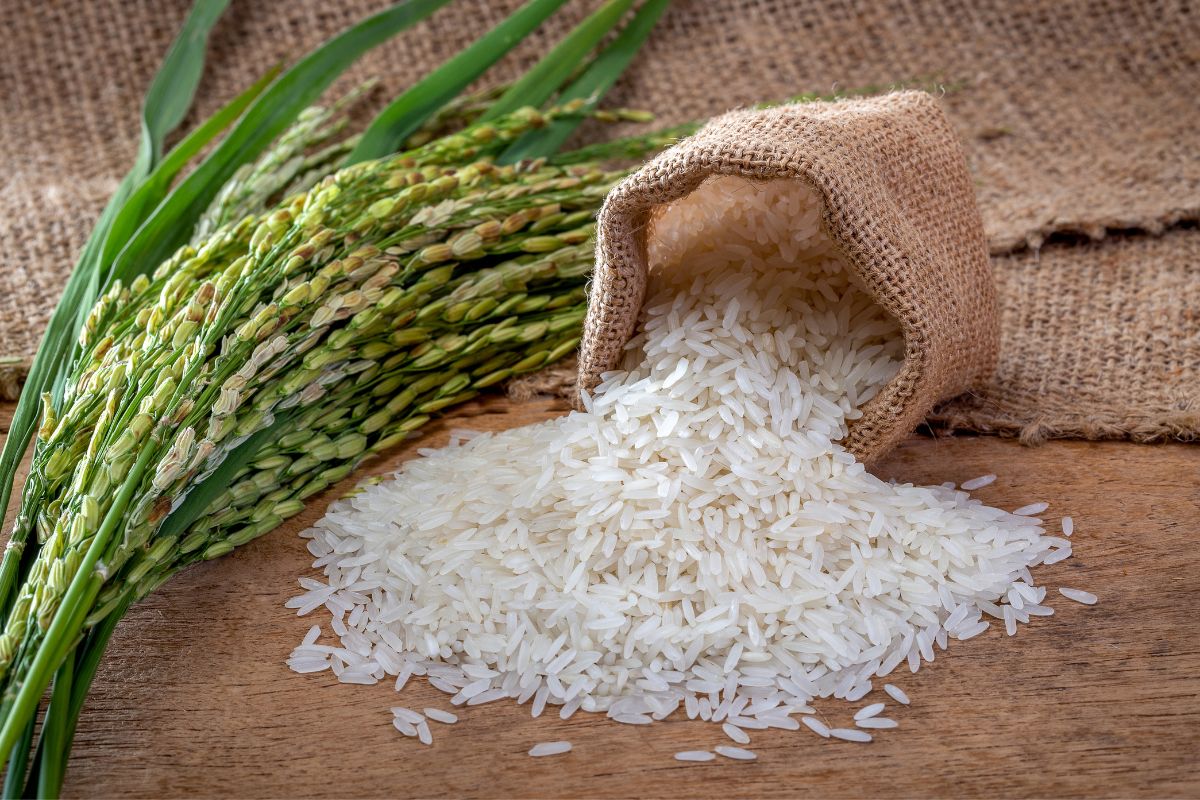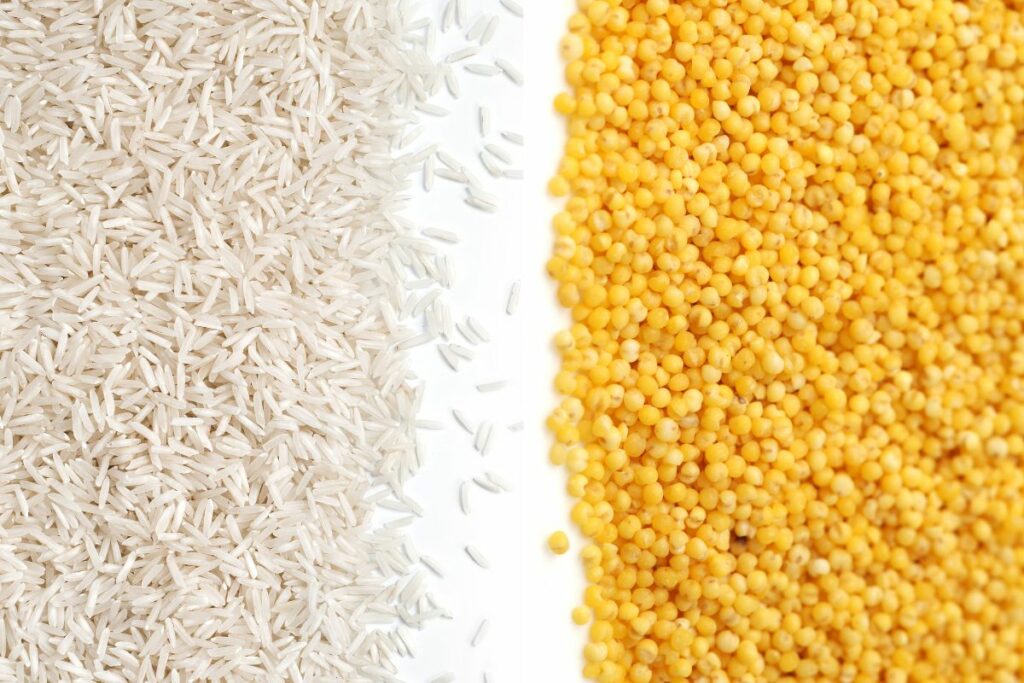Are you curious whether rice or millet is better for you and what these grains look like when compared nutritionally? Yes? Well then, you are certainly going to find this article enlightening.
We cover everything you need to know and more about the health impacts and nutrition of rice and millet. From the caloric content to a comparison of the nutritional data on these two foods.
So, without further ado, let us dive right in and get started! There is a lot to cover!
Let’s Compare The Nutritional Data
Despite being quite similar, millet and rice have different nutritional value. It is for this reason that we are going to compare and contrast the general nutritional date between these two grains.
Glycemic Index Of Millet And Rice
When you compare millet to rice you will find that millet has a higher glycemic index. In fact, millet is classified as a high glycemic index food.
It has a GI of 71 which is acutely high in comparison to drive which has a glycemic index of 60. Which is not too bad but still noticeably lower than millet.
Millet And Rice – Caloric Content
You might think that rice and millet have a similar caloric deficit. But millet actually has a caloric count which is three times higher than rice.
If you were to consume one-hundred grams of millet you would be consuming about 378 calories.
In comparison, one hundred grams of rice is only 130 calories. This is quite a big difference and one that you should certainly consider when choosing between these grains.

Millet And Rice – Carbohydrate Content
Going along with the data trend so far, millet has about two and a half more carbohydrates than rice.
So, for example, about seventy-three grams of millet covers twenty-four percent of your daily recommended value.
In comparison, twenty-eight grams of rice contains only nine percent of your daily recommendation of carbohydrates. But when you look at the fiber content of these grains you will find that millet is richer in fiber than rice.
Millet contains about 36% of the fiber you are recommended to consume daily. Rice on the other hand is extremely low in fiber.
Millet And Rice – Fat Content
Rice contains a very little amount of fat. This amount is generally considered negligible. Alternatively, millet contains quite high fat content which about four grams of millet contains six percent of the recommended daily value.
Millet And Rice – Protein Content
Millet generally contains a much higher content of protein than rice. About eleven grams of millet contains eleven grams of protein while rice only contains just over two and a half grams of protein.
Millet And Rice – Mineral Content
Both rice and millet are beneficial to consume. However, there are clear winners when it comes to certain minerals behind higher or rice or millet.
The results we are about to talk about are based on thirty grams of rice and millet. Below we have listed which minerals millet is higher in than rice:
- Millet contains more magnesium than rice
- Millet contains more phosphorus than rice
- Millet contains more potassium than rice
- Millet contains more zinc than rice
- Millet contains more copper than rice
Below is a short list of the main minerals that rice has more of than millet:
- Rice contains more calcium than millet.
- Rice contains more iron than millet.
- Rice contains more sodium than millet.
If you would like to take a look at the mineral and nutritional benefits of rice over millet make sure to check out Foodstruct. They have a few studies and graphs that cover this topic in more detail.
Millet And Rice – Vitamin Content
When you are comparing the vitamin content of rice and millet, you will find that millet is richer in vitamins.
This grain contains B1, B2, B3, B5, B6, folates and more. These vitamins can cover a minimum of fifty percent of your daily vitamin needs.
Rice Vs Millet – What Are The Health Impacts?

Both rice and millet are beneficial to your health. But what are the main differences? Well that is what we are going to cover in this article. So, without further ado, let us dive right in and get started!
The Positives
Below we are going to cover the positive health benefits of consuming rice or millet:
Good For People With Celiac Disease Or Gluten Intolerance
Both of these grains can be consumed in gluten intolerance and celiac disease. This is because neither of them actually contain gluten
Protective Against Cardiovascular Disease
Millet is actually quite high in phytochemicals which can be beneficial as a protective agent against cardiovascular disease. On top of that it can help control serum lipid levels.
We should also mention that white rice has absolutely no connection to the development of cardiovascular disease. Millet simply has properties that can help protect against this disease.
Protects Against Diabetes
Millet is well known for containing tannins which have properties which are anti-obesity. When this happens there can be a reduction of metabolic syndrome and diabetes occurring.
Beneficial For The Gut
By consuming millet you can actually benefit your gut’s microbiome. This is because there is a high content of fiber in millet which is very good for your health.
Anti-Carcinogenic
While there is no relation to rice or millet causing cancer. There have been studies which indicate that millet in particular has antioxidants and phytonutrients which are anti-carcinogenic.
The Negatives
In this section we are going to take a look at the potential negative impacts on your health these grains might have:
Cardiovascular Health
Studies do not state that rice causes cardiovascular disease. However, you can develop metabolic syndrome which can cause cardiovascular disease in the long run.
This is largely because obesity is easily caused by the consumption of excess rice. When this happens there can be a higher risk of cardiovascular disease developing.
Diabetes
There have been a few studies on rice and how it has actually caused type two diabetes. In particular, it is white rice has been linked to the development of this disease.
There are a ton of studies which you can look at in relation to the negative health impacts of rice and millet. For example, you could check out HSPH Harvard.
Final Thoughts
We hope that you have enjoyed reading this article and learning about rice and millet.
There is a lot more we could have covered when comparing the nutrition and health benefits of these two grains. If you want to learn more, we recommend that you check out some other studies.
For example, you could look at Smart Food, they cover a lot about what makes millet better or worse than rise.
If you enjoyed reading this article and learning about these grains, you can always check out our website. We cover a variety of topics which you are bound to find interesting.
With all of that being said, we hope that this article has been useful to you and that you have learned something. Have a great day! Goodbye for now!








